Australia So Much to See


“Cotton bush” flowers (Ptilotus obovatus) were a colourful sight. See this and other Western Australian Wildflowers on our Wildflower
pages.
At Kookynie, there is a hotel (for sale) and a few standing ruins. A few old shops still standing have been restored as a residence.
Stopping for the night a discreet distance from a well, we watched kangaroos and emus come to water, but saw no station farm livestock.
Nearby were old horseshoes of all sizes indicating that this well had been a camp site in the early days.
At Mount Morgans, little remains but a remnant of the railway platform and the old municipal chambers. Behind this were some
dongas surrounded by a tall fence (with gate open) with some in residence at the Department of Justice Work Camp.
At the old Murrin Murrin copper mines, colourful tailings dumps remain.
From Laverton travellers head east into central Australia, but we were heading to Leonora, following the Golden Quest Discovery Trail. The Great Central Road would have to wait.
Windarra is the site of the 1969 Poseidon nickel mine, whose shares had one of the most spectacular rises in stock market history.
Share rose from $1.85 to $280 over a short period, with the buying frenzy fuelled by a report of rich nickel deposits which was an
over estimation to say the least. The bubble burst and the share prices crashed, although nickel deposits meant a viable mine
for some years. The heritage trail had been recently closed and signage removed. Mining has recommenced at Windarra.
Murrin Murrin mine site has modern and massive nickel and cobalt plant. This mine site is 25 kilometres north of the old Murrin
Murrin copper mines we passed on the old road between Malcolm siding and Laverton.
Over 600 people are employed at Murrin
Murrin mine and 20% of the workforce is Aboriginal. The processing plants can be viewed in the distance from the lookout.
Processed
minerals are trucked to the rail head at Malcolm #, an abandoned gold town to the south, now with a very busy rail terminal.
Adjacent is Hoover House. Built as the mine manager’s residence for Herbert Hoover (later to become the 31st President of the
United States of America), he moved to manage the coalfields in China before its completion. It is open to the public, and can
be booked for accommodation. Read about Herbert Hoover here
On the hill at the museum, the old Oregon pine mine headframe is on display. Built in 1899 it is one of the few wooden headframes
of that size to operate in Australia. It once stood where the open cut is now.
Just south of Leonora is the old gold mining town of Gwalia. Deep under the huge open pit which is over a kilometre across,
underground mining now takes place. See more on Australia's Deepest Goldmine.
The remaining old corrugated iron miner’s cottages are being restored. Each of these tiny cottages has been ‘adopted’ by a family
who restore their cottage to be fully furnished as it would have been in the early 1900s.
A bedside cabinet made from kerosene
drums has wash bowl and jug.
From Gwalia and Leonora, our route travelled through stations where we saw occasional cattle, looking rather thin and grazing on bluebush.
There are sites of further old towns, and a few modern mines.
We stopped for the night at Granite Creek and watched the full moon rising.
Travelled on we passed through Salmon Gum and Gimlet stands which had escaped the relentless timber harvesting, contrasting with the
logged areas where trees are still much smaller and often have multiple trunks as they have regrown from the stumps.
Snake Hill Lookout overlooks Lake Ballard, a huge salt pan with many islands. Not far from here are the Gormley Statues.
In 2002, British sculptor Antony Gormley was commissioned to create life sized statues representing 51 members of the Menzies community.
These slender black steel figures are spread out over a seven square kilometre area of the Lake.
After passing a number of signed ghost towns, where nothing but broken glass remained, we called in to Ularing Rock which has a soak
at its base once providing water for travellers and local Aborigines. Ernest Giles had an altercation with local Aborigines
at this site in 1875. He referred to the rock as Ularing, being the Aboriginal name.
At the then very dry Rowles Lagoon, we were amused at the signage of areas for water skiing, with swimming being prohibited in the
ski zones.
We continued south to Coolgardie, completing the loop Discover Trail. Time to top up the fuel tank and fill the water cans ready
to explore old mine sites further to the south west.
Near the busy Malcolm railway siding #, the eastern end of the current railway network, we took the old road to Laverton passing the
sites of more former mining towns. The Old Laverton Road follows the long abandoned railway track.
Mount Morgans was the first prisoner work camp to be largely powered by solar energy. The remoteness of the site makes solar energy
a cost-effective and environmentally sound power supply for the camp. The camp played an important role in preparing prisoners from
the region to return to their communities following release from prison. By allowing them to live and work in their local area, they
were able to build the skills and confidence needed to return successfully to their communities. Projects completed include; general
maintenance and landscaping of grounds at the Laverton Hospital and Community Health Centre, general maintenance and landscaping of
the Leonora Police Station, courthouse and St John Ambulance base, restoration of old school building at the Gwalia tourist mine,
restoration at the Mount Margaret community. Update: This centre is now closed

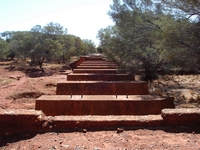
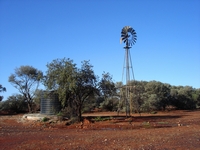
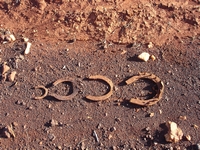
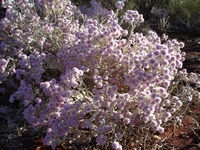
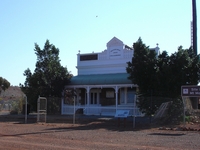
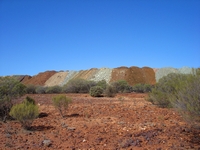
Laverton is named in honour of Dr Charles Laver, a doctor of medicine and a successful prospector. Dr Laver rode a bicycle from
Coogardie to what became the town of Laverton. A statue of Laver and his bicycle can be seen in the centre of Laverton.
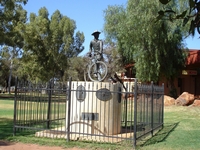
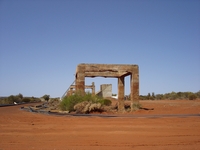

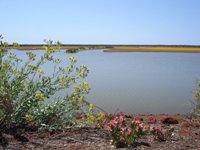
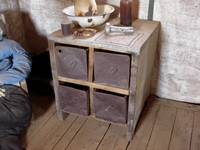
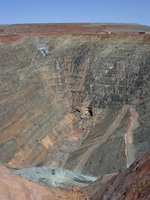
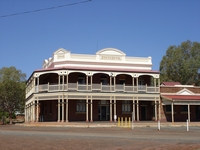
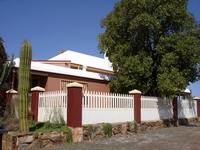
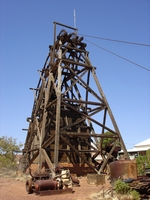
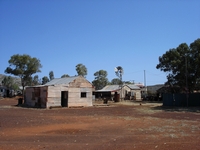
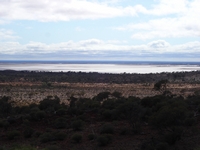
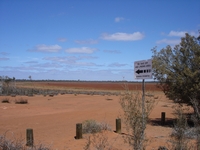
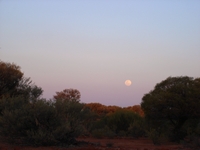
To the north of the old Malcolm townsite and rail siding and near Leonora is Malcolm dam, a haven for bird life and a pleasant picnic
or camping spot.
In Quest of Gold continued
Copyright (C) 2013 AustraliaSoMuchtoSee.com. All rights reserved
Since our visit the upgraded Great Beyond Visitor Centre at Laverton features the Explorer's Hall of Fame features many explorers
who traversed the Laverton region from the mid nineteenth to the early twentieth century, including John Forrest, Ernest Giles, David
Carnegie, Gus Luck and Frank Hann. Displays trace the early history of the region, through the boom and bust mining eras, to
the present day. A small entry fee applies.





















